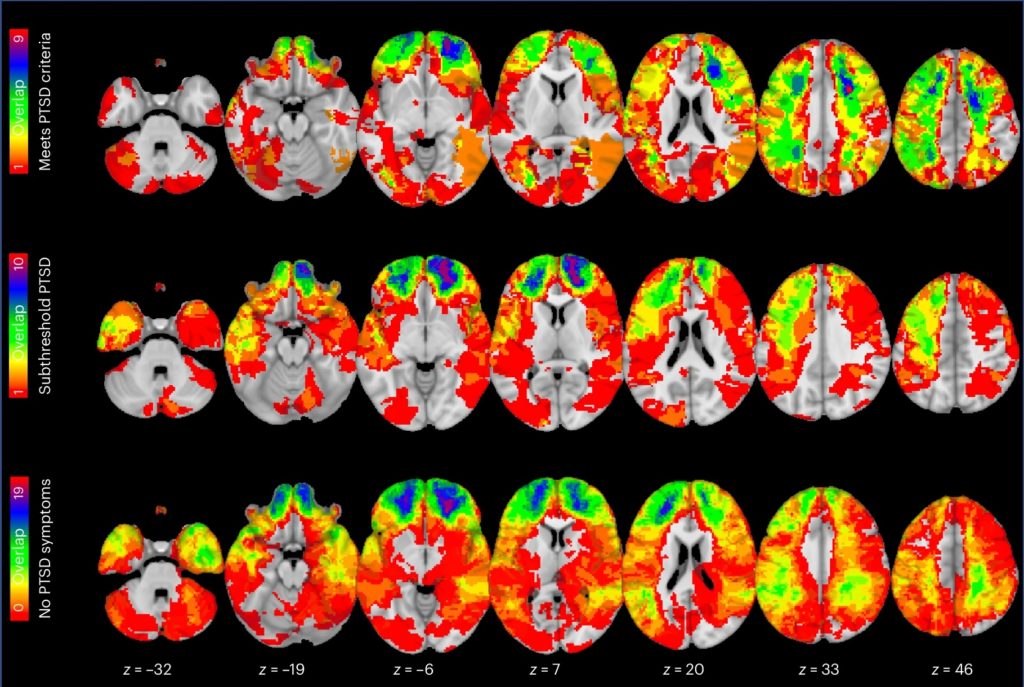
A multi-institutional team of investigators has discovered that targeting a specific neural circuit through noninvasive neuromodulation may help reduce symptoms in patients with posttraumatic stress disorder (PTSD), according to a recent study published in Nature Neuroscience.
Jordan Grafman, PhD, professor of Physical Medicine and Rehabilitation and of Psychiatry and Behavioral Sciences and director of Brain Injury Research at the Shirley Ryan AbilityLab, was a co-author of the study.

PTSD impacts an estimated 13 million Americans, many of whom are military combat veterans, according to the U.S. Department of Veterans Affairs’ National Center for PTSD. Patients with PTSD also commonly experience depression, substance use and suicidality. While medications and psychotherapy can help reduce symptoms, they aren’t completely effective and more targeted treatment strategies are urgently needed.
In the current study, Grafman and colleagues analyzed patient data from the Vietnam Head Injury Study, which included 252 U.S. military veterans who experienced combat during the Vietnam War, to determine brain circuitry networks linked to the development of PTSD.
Of these participants, 197 sustained a penetrating traumatic brain injury leading to a focal brain lesion, while 55 control participants sustained non-neurological injuries of similar severity.
Using a combination of lesion symptom mapping and cross-validation techniques, the investigators found in participants with a penetrating head injury that lesion locations that reduced the likelihood of developing PTSD were connected to a neural circuit involving the medial prefrontal cortex, amygdala and anterolateral temporal lobe.
In participants without lesions, the investigators found that PTSD was also associated with reduced connectivity in this neural circuit. Additionally, in 20 participants who received transcranial magnetic stimulation – a non-invasive procedure that uses magnetic fields to stimulate nerve cells in the brain – and underwent resting-state fMRI scans, the scientists observed a reduction in functional connectivity within the identified neural circuit and a reduction in PSTD-related symptoms.
The findings build on a previous study led by Grafman, which found that lesions intersecting the amygdala and medial prefrontal cortex reduced the probability of developing PTSD, and can be generalized to inform the development of new treatment approaches for patients with PTSD who are military combat veterans and for patients with PTSD who have experienced trauma, according to Grafman.
“Hopefully, if you stimulate one or more brain regions within this neural network, you can use that stimulation to facilitate the brain plasticity that allows people to form new positive associations that links the stressful memory to a new more positive behavior that can dampen the prior negative association that induced their post-traumatic stress,” Grafman said.
According to Grafman, next steps in this research effort include identifying early intervention strategies for veterans who have suicidal ideation related to PTSD.
“Active duty military and veterans have a high rate of suicide currently, and so if we can figure out ways to not just simply identify those people but to positively intervene so that it precludes somebody even considering suicide, that would be a good thing,” he said.
Grafman has led the Vietnam Head Injury Study, a prospective, long-term follow-up study of a cohort of 1,221 Vietnam veterans with mostly penetrating brain injuries, for more than 40 years.
“One of the reasons the Vietnam veterans were great to work with was because they were very dedicated to our research and they understood that we were trying to acquire more knowledge about brain science and that we wanted to translate that knowledge to help veterans in the future,” Grafman said. “It’s been a team effort.”
This work was supported by National Institutes of Health grants K23MH121657, R21MH126271 R01MH113929, R21MH126271, R56AG069086, R01MH115949 and R01AG060987, I21 RX002032, I50 RX002864, U01 MH123427 and P20 GM130452; the Brain and Behavior Research Foundation Young Investigator Grant; the Baszucki Brain Research Fund; the Department of Veterans Affairs grant I01CX002293; the Nancy Lurie Marks Foundation; the Kaye Family Research Endowment, and the Rosenberg/Carlin fund.






